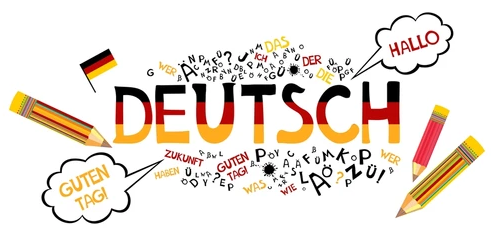Do you know about Canada National Language? Canada, known for its vast landscapes, multiculturalism, and strong sense of national identity, is a country that prides itself on being bilingual. The two official languages of Canada are English and French. In this article, we will explore the history, significance, and impact of bilingualism in Canada, along with its implications for Canadian society, education, government, and the economy.
Canada’s linguistic duality traces its roots back to the country’s colonial history. French and English have played significant roles in shaping Canada’s cultural and political landscape. Today, bilingualism is a fundamental aspect of Canadian identity, and the ability to communicate in both English and French is highly valued.
History of Canada National Language
The presence of English and French in Canada can be traced back to the colonial era. English-speaking settlers from Britain and French-speaking settlers from France established colonies and settlements across the country. Over time, these communities grew and coexisted, influencing each other’s languages and cultures.
The Royal Proclamation of 1763 marked a significant moment in Canada’s language history. It recognized the rights of French-speaking Canadians to practice their religion and maintain their language and customs. This proclamation laid the foundation for language rights in Canada.
However, tensions between English and French-speaking communities persisted. The Manitoba Schools Question in the late 19th century sparked a debate over language rights in education. The dispute between Protestant and Catholic communities led to legislation that restricted the use of French in schools, leading to protests and challenges.
The Official Languages Act of 1969
In an effort to promote linguistic equality and address language-related issues, the Canadian government introduced the Official Languages Act in 1969. The Act aimed to ensure that English and French had equal status and equal rights and privileges as to their use in federal institutions.
Under the Official Languages Act, federal institutions must provide services in both English and French, and federal employees must be able to work in the official language of their choice. The Act also established the position of the Commissioner of Official Languages, responsible for overseeing and enforcing language rights.
Bilingualism in Government and Politics
Bilingualism is highly valued in the Canadian government and political sphere. Federal public servants are required to be bilingual, with positions designated as either English Essential or French Essential. This requirement ensures that citizens can interact with government institutions in the official language of their choice.
In the Canadian Parliament, both English and French are used in debates, proceedings, and official documentation. This practice reflects the commitment to linguistic equality and the representation of both linguistic communities in the country’s democratic processes.
Bilingual Education in Canada
Education plays a vital role in promoting bilingualism in Canada. The Canadian education system recognizes the importance of English and French and offers various programs to support bilingual education. French immersion programs, in particular, have gained popularity across the country.
French immersion programs provide students with the opportunity to learn and be immersed in the French language while still receiving a comprehensive education. These programs have been successful in producing bilingual graduates who are fluent in both English and French.
Bilingual education not only enhances language skills but also fosters cultural understanding and promotes inclusivity. However, challenges such as access to resources and qualified teachers can impact the availability and quality of bilingual education in some regions.
Language in Canadian Society
English and French are the most widely spoken languages in Canada, with English being the dominant language. English is the primary language for the majority of Canadians, while French is predominantly spoken in the province of Quebec and parts of eastern Canada.
Canada’s linguistic diversity extends beyond English and French. Due to its multicultural nature, Canada is home to numerous immigrant communities speaking a wide range of languages. Indigenous languages also hold significant cultural importance, and efforts are being made to preserve and revitalize them.
Language rights are protected in Canada, ensuring that linguistic minorities have the right to access services and resources in their preferred language. This commitment to linguistic diversity and multiculturalism is a testament to Canada’s inclusive approach to language.
The Economic Impact of Bilingualism
Bilingualism offers various economic advantages in Canada. Many job opportunities require bilingualism, particularly in federal government institutions, where fluency in both English and French is often a prerequisite. Bilingual individuals have a broader range of career options and increased employability.
Moreover, bilingualism in the workplace is linked to higher salaries and career advancement opportunities. Companies that operate in both English and French markets benefit from bilingual employees who can communicate effectively with clients and customers in their preferred language.
Bilingualism also contributes to Canada’s international relations and trade. The ability to conduct business in both English and French opens doors to partnerships and collaborations with French-speaking countries around the world.
Challenges and Debates Surrounding Canada National Language
The Official Languages Act has faced debates and criticisms over the years. Some argue that the Act places a burden on taxpayers and that bilingual services are not always necessary in all regions. Others believe that the Act does not go far enough in protecting linguistic rights, particularly for Indigenous languages.
Language tensions can also arise, especially in regions where English and French communities coexist. These tensions may reflect broader cultural, political, or historical factors and require ongoing dialogue and understanding to find common ground.
The recognition and revitalization of Indigenous languages are crucial aspects of Canada’s language landscape. Efforts are being made to support language revitalization programs and provide resources to Indigenous communities to preserve their languages and cultural heritage.
Conclusion
Canada’s bilingualism, with English and French as its official languages, is a unique aspect of the country’s identity. Bilingualism is deeply ingrained in Canadian society, education, government, and the economy. It promotes inclusivity, cultural understanding, and equal access to services for all Canadians.
It is evident that Canada’s commitment to bilingualism has shaped its rich linguistic diversity and multicultural fabric. The ability to communicate in both English and French opens doors to opportunities, enriches cultural exchanges, and fosters a sense of unity among Canadians.
FAQs
Q: What are the official languages of Canada?
A: The official languages of Canada are English and French.
Q: Is English or French more widely spoken in Canada?
A: English is more widely spoken in Canada, while French is predominantly spoken in the province of Quebec and parts of eastern Canada.
Q: Are there any other languages spoken in Canada?
A: Yes, Canada is home to a diverse range of languages spoken by various immigrant communities. Indigenous languages also hold significant cultural importance.
Q: Can you get by in Canada with just English?
A: Yes, English is widely spoken and understood across Canada. However, having some knowledge of French can be beneficial, particularly in certain regions and for specific job opportunities.
Q: How does bilingualism affect cultural identity in Canada?
A: Bilingualism in Canada is seen as a reflection of the country’s cultural diversity and inclusivity. It allows individuals to maintain their cultural heritage while embracing the broader Canadian identity.
References
- Government of Canada. (2021). Official Languages in Canada: Understanding Your Language Rights. Retrieved from https://www.canada.ca/en/canadian-heritage/services/official-languages-bilingualism/publications/official-languages-act-toolkit/understanding-your-language-rights.html
- Office of the Commissioner of Official Languages. (2021). Official Languages Act: Overview. Retrieved from https://www.clo-ocol.gc.ca/en/official-languages-act
- Bouchard, G., & Taylor, C. (2008). Building the Future: A Time for Reconciliation. Report of the Royal Commission on Aboriginal Peoples. Retrieved from https://www.bac-lac.gc.ca/eng/discover/aboriginal-heritage/royal-commission-aboriginal-peoples/Pages/final-report.aspx


